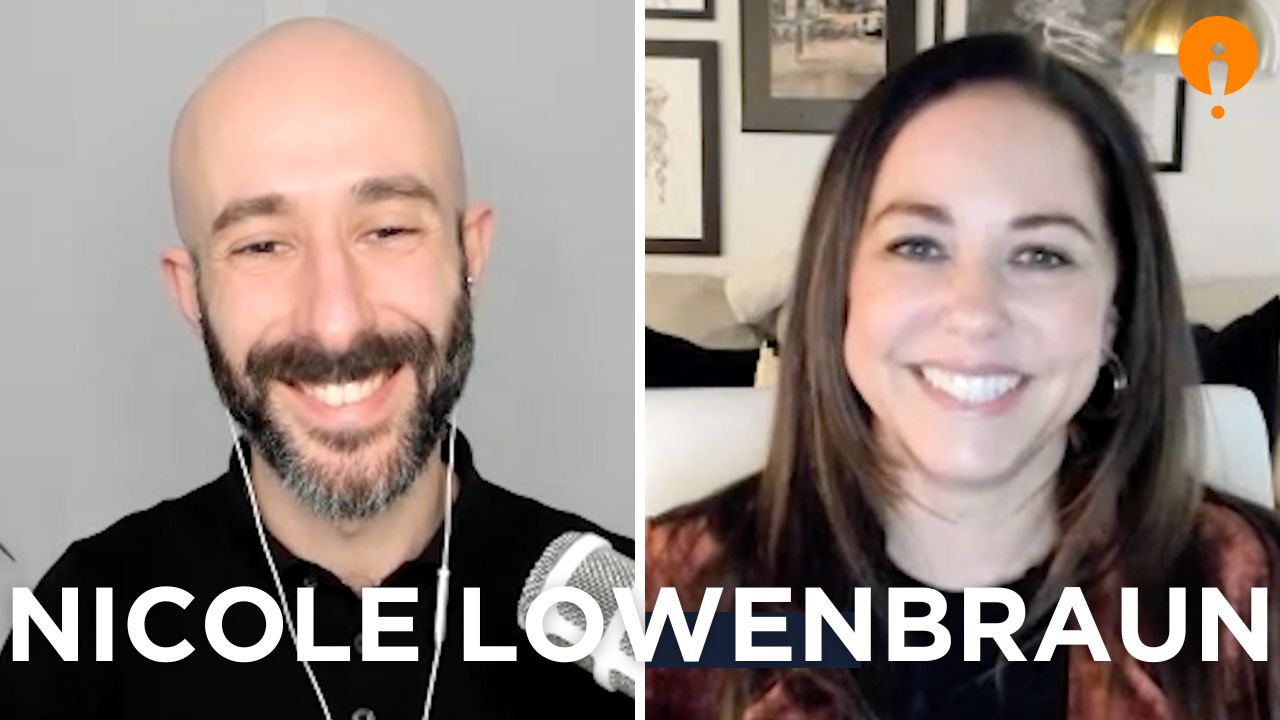
In this episode of the Ideas on Stage podcast we spoke with Nicole Lowenbraun.
Nicole offers a unique perspective on why what you say and how you say it matters, because she’s equal parts speech-language pathologist and business communication expert. Nicole has coached and written for thousands of clients, most of whom top the Fortune 100, with a focus on helping clients find their most authentic and powerful voice.
After decades of helping others master their expressive communication skills, Nicole realized the business community (herself, included) was widely neglecting the receptive side of communication – listening. She’s now committed to teaching the world the value of improving both sides of the communication equation and continues to nurture her own skills as a writer, speaker, and listener.
With a Master’s in Communication Disorders, Nicole is passionate about fostering more inclusive communication in the workplace, especially with neurodiverse populations. Nicole believes that acceptance of communication differences and a commitment to constant progress is the key to a happier future of work, regardless of industry, role, or experience.
Nicole lives in Brooklyn with her plants and is a proud “pizza bagel”: half Italian-Catholic, half Polish-Jewish. She puts the Star of David on top of her Christmas tree.
In this episode we talked about how to improve our listening skills.
Transcript
Can you share how your background influences how you communicate and listen?
Growing up with a mix of Italian Catholic and Polish Jewish traditions taught me to value different viewpoints. This mix has helped me understand how important it is to communicate well and listen to others’ perspectives.
What made you switch from sales to speech therapy, and how does it help you now?
I wanted to do something more meaningful, so I switched to speech therapy. This field taught me a lot about communication, which I now use to help people in the corporate world communicate better.
How did you come up with the idea of adaptive listening?
We noticed that while active listening is good, it doesn’t cover all the ways we need to listen at work. So, we thought of adaptive listening, which means changing how you listen based on what the person talking to you needs.
How does your book help people use adaptive listening at work?
Our book gives tips on how to handle different work situations, showing when and how to change your listening style. It covers what to think, how to show you’re listening, and what to say to make sure you’re listening in the best way for that moment.
How can you tell what type of listening someone needs from you?
Look out for hints in their words, tone, body language, and the situation.
What can we do to get others to listen to us the way we need?
Once you know the different ways people listen, you can guide them on how to listen to you better. For instance, if you need support, you can kindly ask them to just hear you out instead of giving advice right away.
Are there any other resources you recommend for improving how we communicate and listen?
Yes, “Nonviolent Communication” by Dr. Marshall Rosenberg is great for learning about empathy in conversations. Also, Alan Alda’s book “If I Understood You, Would I Have This Look on My Face?” uses improv to teach how to connect better with people, which I find really useful.
If you could, would you change anything about your book now that it’s finished?
It’s hard to say without hearing what readers think first. We did our best to include lots of real-life stories and examples, as our editor suggested. We’re curious to see if readers find these helpful in applying the concepts.
What’s a quick tip for better listening in my next meeting?
Before any meeting, ask yourself, “What does the person talking need from me?” This simple shift from thinking about what you want to get out of the meeting to focusing on the speaker’s needs can make you a much better listener.
Can you give an example of how you used adaptive listening at work?
Sure. At our company kickoff, I had to remind myself not to judge the ideas being shared but to really soak in the information. Even though I usually like to critique, I focused on understanding and remembering the plans being discussed.
How do you deal with your natural way of listening when talking to others?
It’s about being aware of my tendency to critique and constantly reminding myself to listen in a way that the situation or the person speaking needs. This helps me adapt my listening to be more helpful in each conversation.
What’s a good way to let others know how you need them to listen to you?
It’s helpful to be clear and kind. For example, if you need someone just to listen without giving advice, you can say something like, “I really value your advice, but right now, I just need someone to listen.”
What’s the main thing you want people to remember about listening?
I’d like everyone to know that there’s not just one right way to listen. Being open to different ways of listening can make us more understanding and flexible in our conversations.
Where can people find you if they want to learn more or connect with you?
Maegan Stephens and I are both on social media platforms like LinkedIn, Facebook, and Instagram. We love hearing from people about their experiences with listening and communication, so feel free to reach out!
Books recommended by Nicole:
- Nonviolent Communication by Marshall B Rosenberg
- If I Understood You, Would I Have This Look on My Face? by Alan Alda
Available on:
I hope you enjoy it!

Want to learn more?
- Read the Confident Presenter book
- To make the most of the book, take the Confident Presenter Scorecard to assess your presentation skills in less than 3 minutes
- Attend our free, live masterclass on all things presentation skills